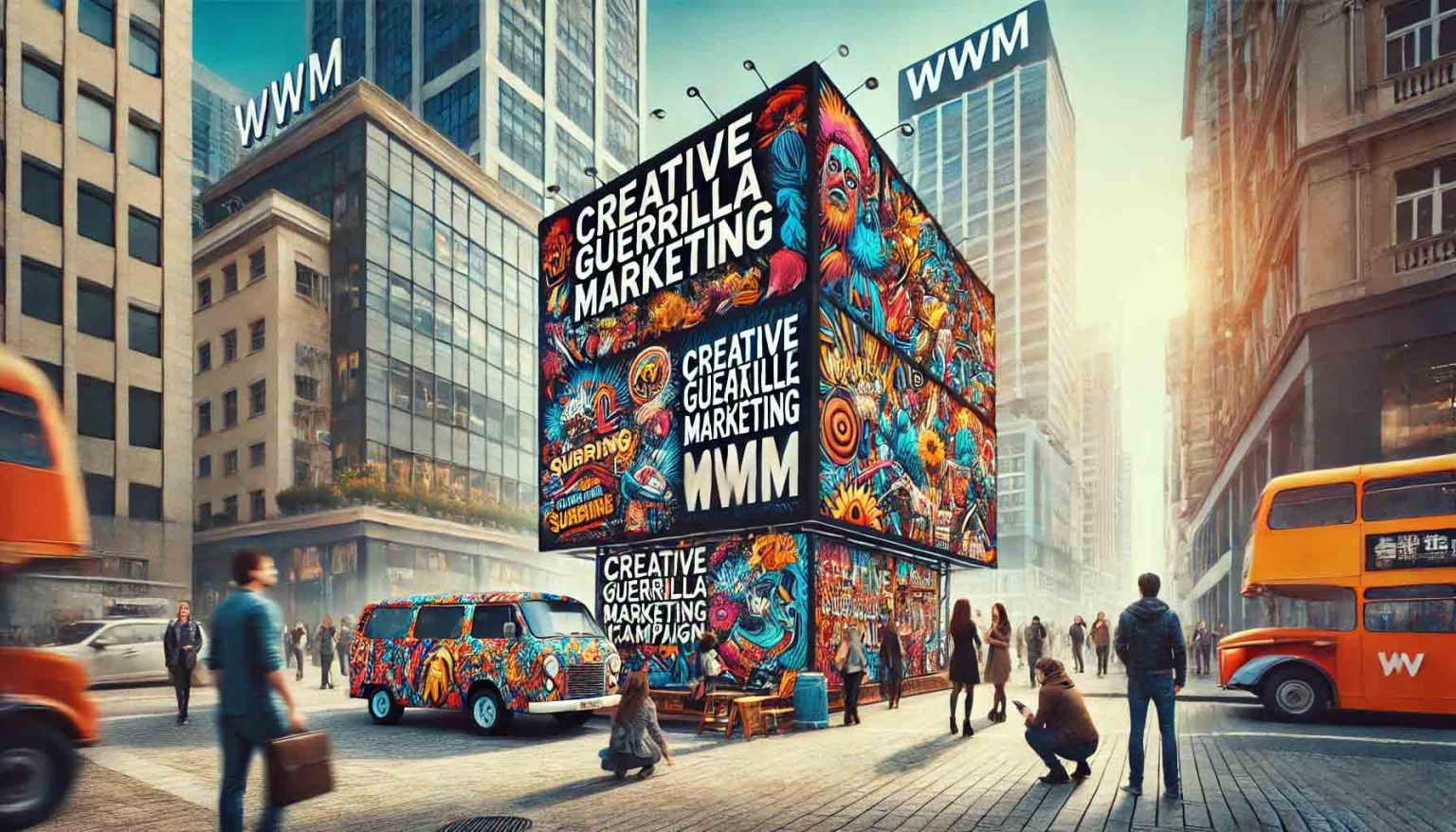
Definition of Guerrilla Marketing
Guerrilla marketing is an unconventional and highly creative marketing strategy aimed at producing maximum results with minimal resources. Coined by Jay Conrad Levinson in his 1984 book “Guerrilla Marketing,” this approach focuses on surprise, originality, and virality to capture the public’s attention. Unlike traditional marketing methods that rely on large budgets and extensive media campaigns, guerrilla marketing leverages the element of surprise and engages consumers in memorable, often interactive ways. The core principles include creativity, cost-effectiveness, and the ability to create a significant impact through unexpected, imaginative tactics.
Importance and Relevance
In today’s saturated market, where consumers are constantly bombarded with advertisements, guerrilla marketing stands out due to its ability to cut through the noise and create a lasting impression. Traditional advertising channels are becoming increasingly cluttered, leading to ad fatigue and reduced consumer engagement. According to a study by Nielsen, only 33% of global consumers trust ads they see on social media, highlighting the need for more authentic and engaging marketing approaches.
Guerrilla marketing’s emphasis on creativity and surprise can lead to higher engagement rates and stronger brand recall. For example, a well-executed guerrilla campaign can achieve a viral effect, with consumers sharing their experiences on social media, thereby amplifying the campaign’s reach without additional costs. This type of marketing also fosters a deeper emotional connection with the audience, as it often involves interactive and experiential elements that create memorable experiences.
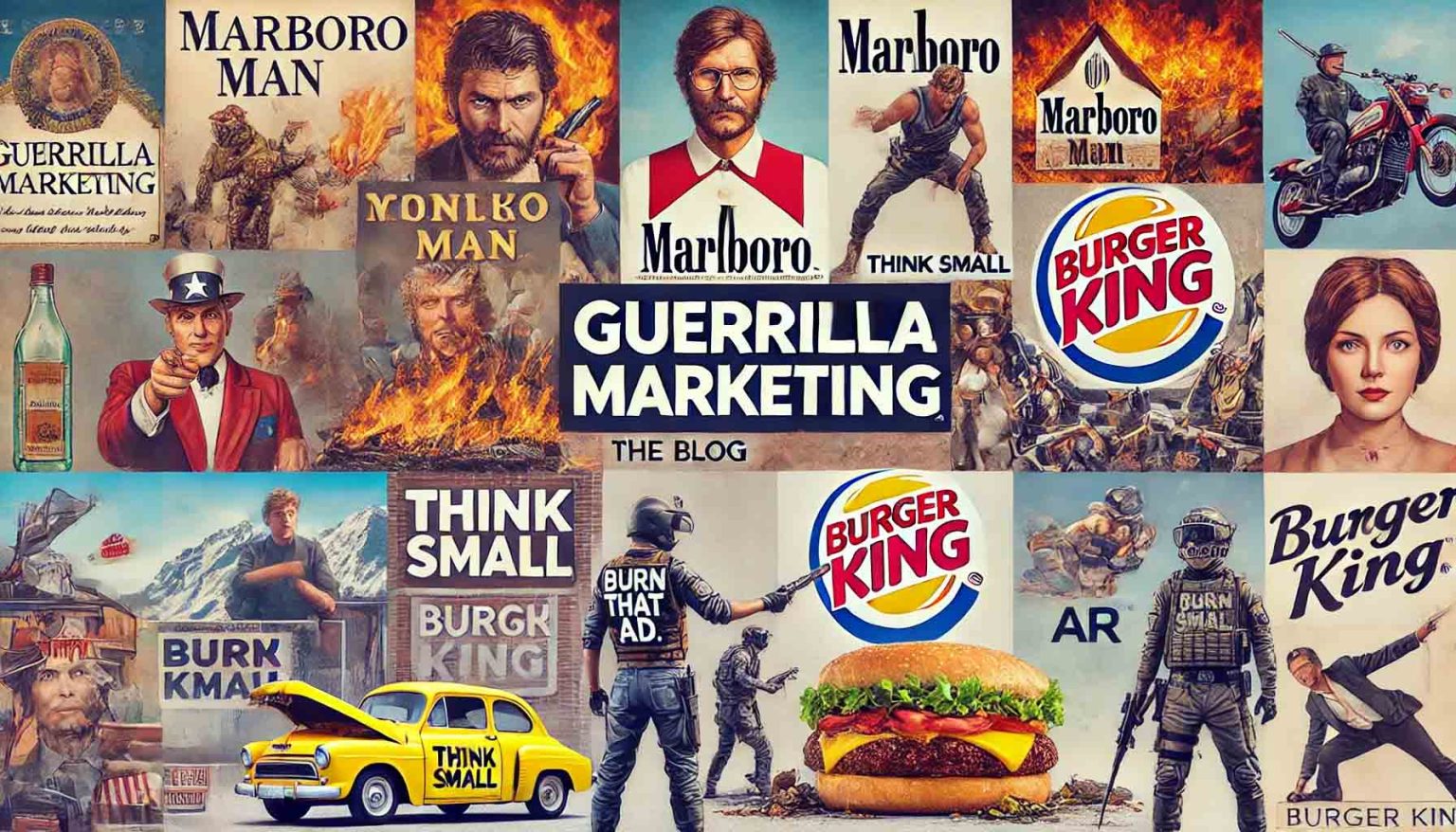
Historical Context
Origins of Guerrilla Marketing
The term “guerrilla marketing” was first introduced by Jay Conrad Levinson in his 1984 book, “Guerrilla Marketing.” Inspired by guerrilla warfare tactics, Levinson applied these principles to marketing, emphasizing the importance of unconventional strategies designed to achieve maximum impact with minimal resources. One of the earliest examples was the famous “Marlboro Man” campaign of the 1950s, which used rugged imagery and storytelling to create a powerful brand identity. Another notable instance was the Volkswagen “Think Small” campaign in the 1960s, which broke conventional advertising norms by embracing simplicity and humor.
Evolution
Over the years, guerrilla marketing has evolved significantly, adapting to changing consumer behaviors and technological advancements. In the 1990s and early 2000s, the rise of digital technology and the internet expanded the possibilities for guerrilla tactics. Brands began leveraging viral videos, interactive websites, and social media platforms to create buzz. For example, the 2002 “Blair Witch Project” campaign used a combination of internet rumors and faux-documentary style to generate massive intrigue and ticket sales.
In recent years, the evolution of guerrilla marketing has continued with the integration of augmented reality (AR) and virtual reality (VR) technologies. These advancements have enabled brands to create immersive experiences that captivate and engage audiences in entirely new ways. For instance, in 2019, Burger King launched the “Burn That Ad” campaign, which used AR to let users “burn” competitors’ ads via their smartphones, resulting in a free Whopper coupon. This innovative approach not only engaged users but also reinforced brand loyalty through an interactive and memorable experience.
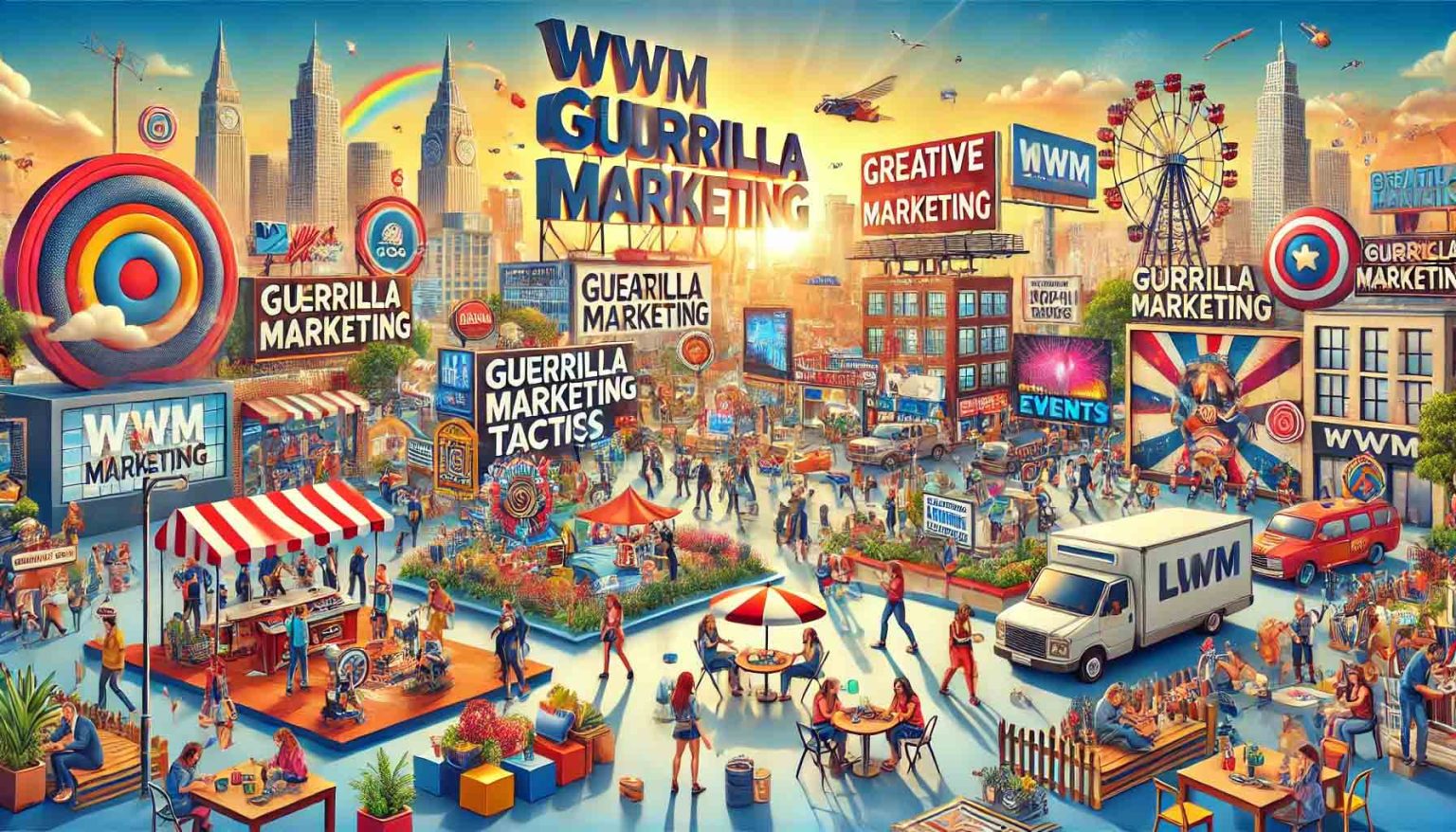
Key Characteristics
Creativity and Innovation
Guerrilla marketing thrives on creativity and innovation. The essence of this approach lies in its ability to think outside the box and break conventional norms. By employing unexpected and imaginative tactics, businesses can capture attention and create a buzz. For instance, in 2007, the “Zombie Walk” in Pittsburgh turned a simple event into a viral sensation, with participants dressed as zombies walking through the city. This creative stunt not only garnered media attention but also engaged the community in a fun and memorable way.
Low Cost, High Impact
One of the most attractive features of guerrilla marketing is its cost-effectiveness. Unlike traditional marketing campaigns that require substantial budgets, guerrilla marketing aims to achieve significant results with minimal expenditure. This approach is ideal for small businesses and startups looking to make a big impact without breaking the bank. For example, the ALS Ice Bucket Challenge in 2014 required minimal investment but raised over $115 million for ALS research, demonstrating the power of a simple yet impactful idea.
Engagement and Interaction
Guerrilla marketing emphasizes direct engagement and interaction with consumers. By creating immersive and participatory experiences, brands can forge deeper connections with their audience. In 2015, Coca-Cola’s “Share a Coke” campaign replaced its logo with popular names on bottles, encouraging people to find and share a Coke with friends and family. This interactive campaign not only boosted sales but also enhanced customer engagement and brand loyalty.
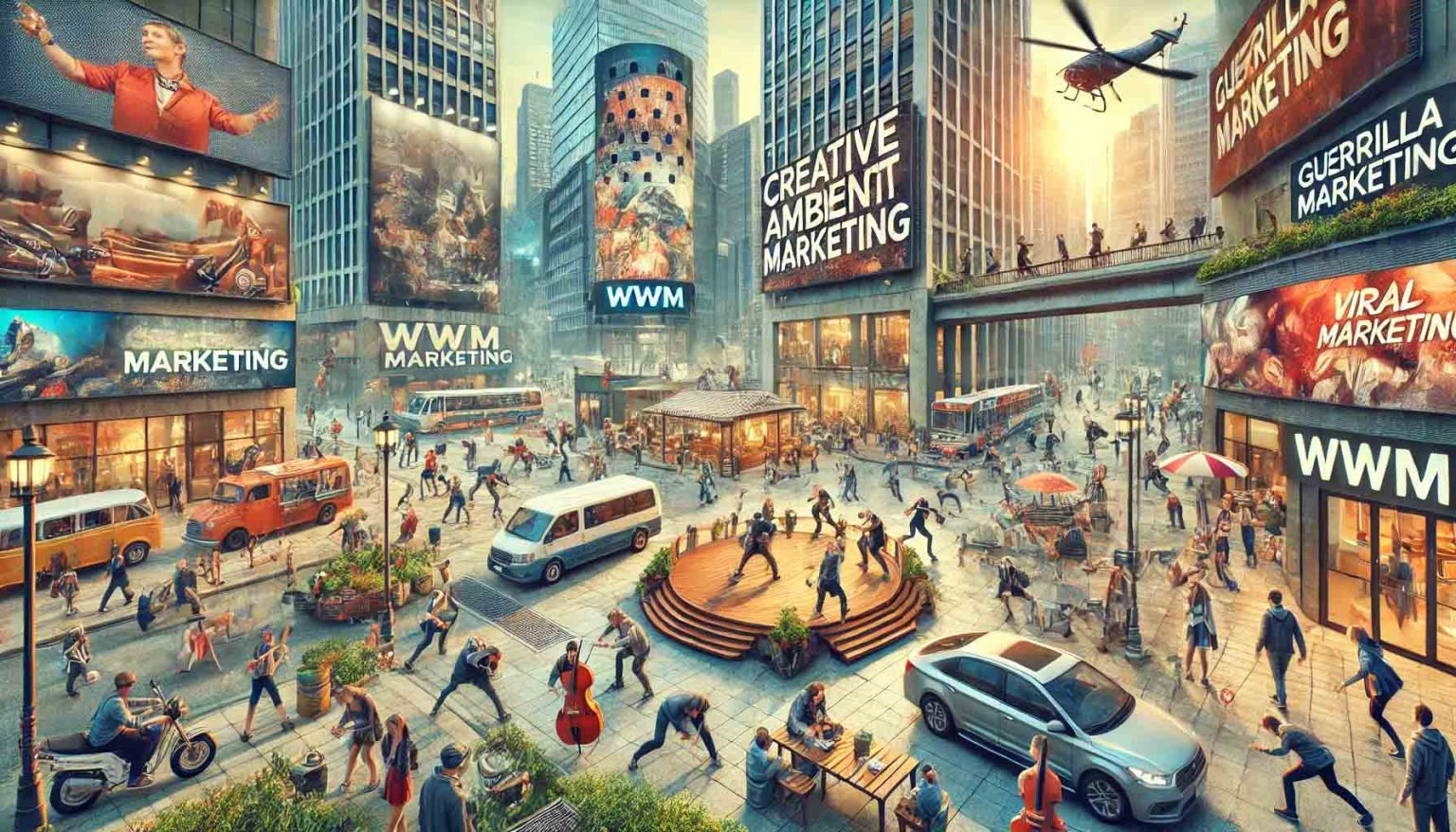
Types of Guerrilla Marketing Tactics
Ambient Marketing
Definition and Examples: Ambient marketing involves placing ads or marketing messages in unusual locations where people wouldn’t typically expect to see them. This tactic uses the environment creatively to surprise and engage the audience. For example, McDonald’s transformed a pedestrian crossing into their iconic fries, turning a mundane public space into an attention-grabbing ad. Another instance is IKEA’s placement of furniture in unexpected public places like bus stops, allowing people to experience their products in everyday settings.
Experiential Marketing
Creating Immersive Experiences: Experiential marketing focuses on creating immersive and memorable experiences that engage consumers directly. These experiences often involve interactive installations, pop-up events, or brand activations that allow consumers to interact with the brand in a hands-on way. For instance, The Refinery Hotel in New York City hosted a “Camp Refinery” pop-up event, transforming their rooftop into a glamping site complete with campfire and tents, offering a unique and memorable experience for visitors.
Viral Marketing
Crafting Campaigns Designed to Spread Organically: Viral marketing aims to create content or experiences that people naturally want to share, leading to widespread organic reach. Flash mobs are a classic example, where a seemingly spontaneous performance in a public place captures the attention of passersby and is shared widely on social media. A notable example is T-Mobile’s flash mob dance at Liverpool Street Station, which went viral and garnered millions of views online. Another effective viral campaign was Old Spice’s “The Man Your Man Could Smell Like,” which used humorous and shareable videos to engage a wide audience.
Street Marketing
Tactics That Take Place on Streets and Public Places: Street marketing involves using public spaces to create impactful and often interactive marketing experiences. This can include street art, public stunts, or guerrilla projections. A famous example is the “Fearless Girl” statue placed in front of Wall Street’s Charging Bull, symbolizing female empowerment and sparking conversations worldwide. Another instance is Red Bull’s “Stratos” project, where Felix Baumgartner’s space jump was broadcasted live, creating a global spectacle that captured the imagination of millions.
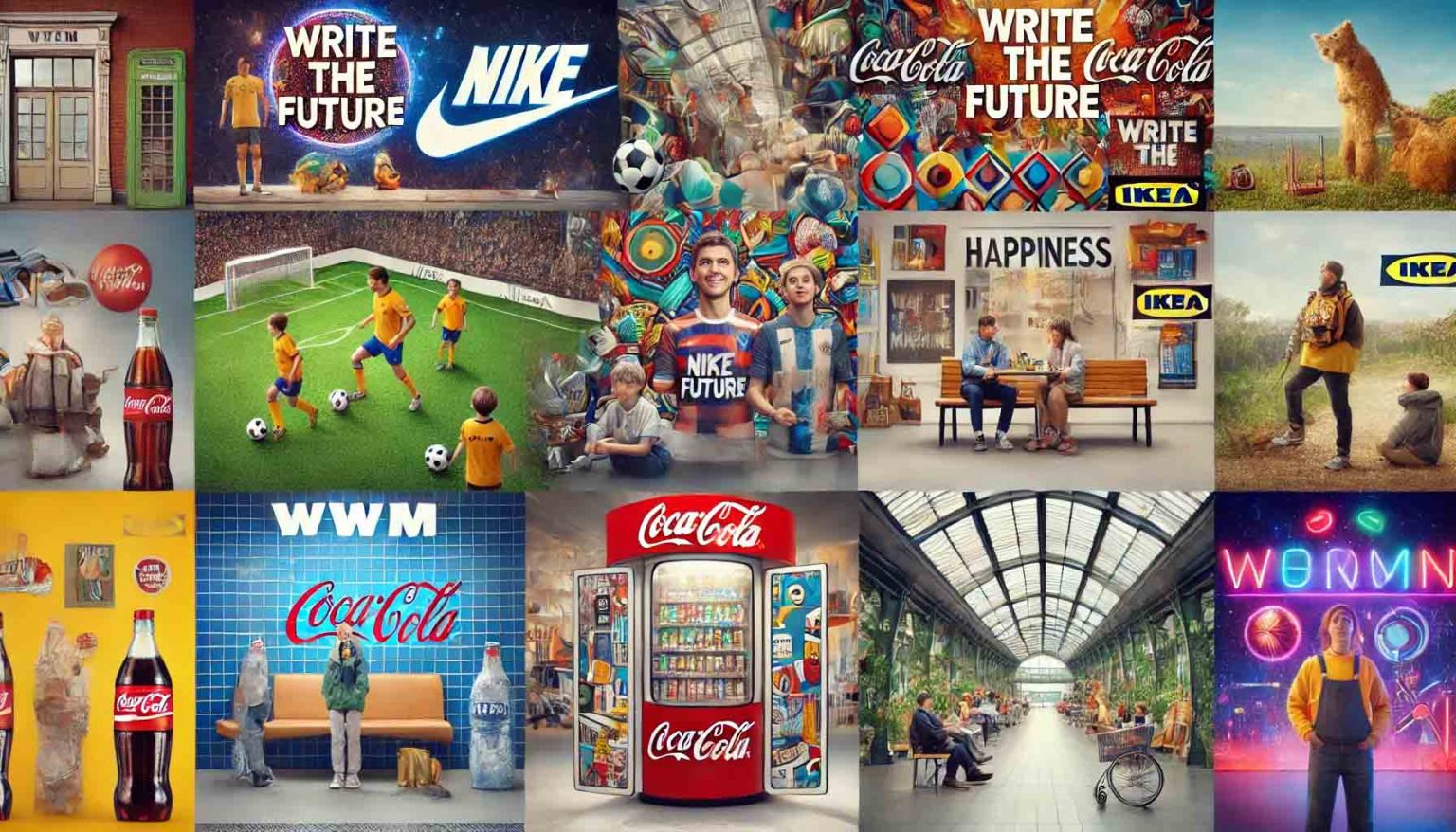
Case Studies
Nike’s “Write the Future” Campaign
Overview of the Campaign and Its Impact: Nike’s “Write the Future” campaign, launched during the 2010 FIFA World Cup, is a prime example of successful guerrilla marketing. The campaign featured a three-minute commercial showcasing soccer stars like Cristiano Ronaldo and Wayne Rooney, illustrating how a single moment in a game could influence their future. This cinematic approach captivated audiences and went viral, garnering over 7.8 million views on YouTube within its first week. The campaign significantly boosted Nike’s brand visibility, outperforming their competitors and solidifying their association with the World Cup, even though Adidas was the official sponsor.
Coca-Cola’s Happiness Machine
Description of the Campaign and Consumer Reactions: Coca-Cola’s “Happiness Machine” campaign, part of their Open Happiness initiative, involved placing vending machines that dispensed not just drinks but also surprise gifts like flowers, pizzas, and even inflatable rafts. Filmed at a college campus, the reactions of unsuspecting students receiving these unexpected gifts were recorded and shared online. The video quickly went viral, amassing over 4 million views on YouTube and generating a wave of positive sentiment towards the brand. This campaign successfully showcased Coca-Cola’s brand values of joy and sharing, reinforcing their market position through an engaging and heartwarming guerrilla marketing tactic.
IKEA’s Guerrilla Marketing in Paris
Analysis of the Tactics Used and the Outcomes: IKEA’s guerrilla marketing in Paris involved transforming public spaces into cozy, livable areas using their furniture and home accessories. For instance, they converted a metro station into a living room, complete with sofas, lamps, and bookshelves, allowing commuters to experience the comfort of IKEA products firsthand. This clever use of public space not only highlighted the functionality and style of IKEA’s offerings but also created a buzz in both traditional and social media. The campaign significantly increased foot traffic to their stores and boosted sales, demonstrating the effectiveness of immersive and interactive guerrilla marketing tactics.
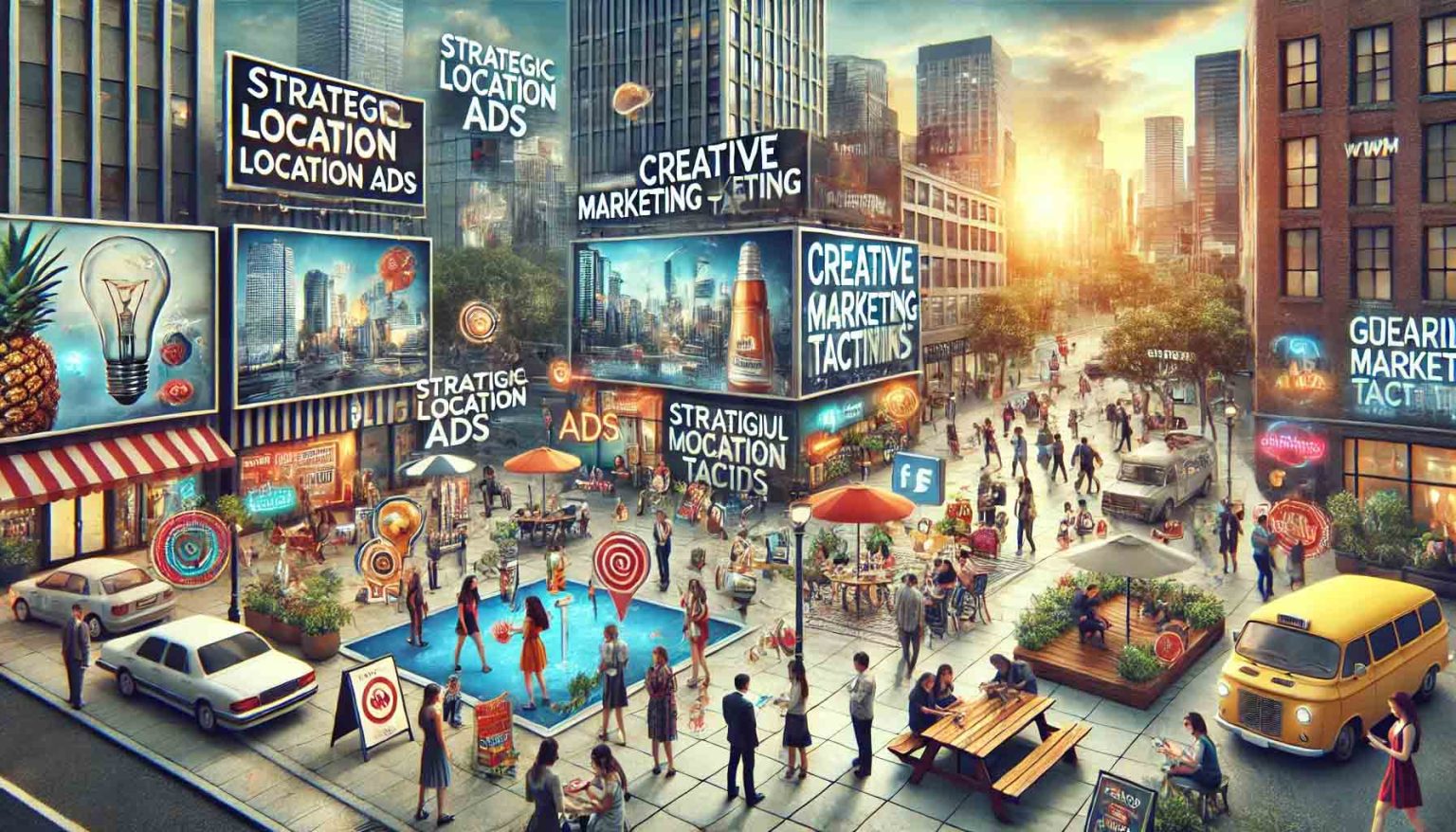
Strategies for Successful Guerrilla Marketing
Understanding the Target Audience
Tailoring campaigns to resonate with specific demographics is crucial for the success of guerrilla marketing. Knowing your audience’s preferences, behaviors, and pain points allows you to craft messages that are not only engaging but also relevant. For instance, Red Bull’s guerrilla marketing campaigns often target young, active individuals by sponsoring extreme sports events and creating high-adrenaline stunts. This precise targeting ensures that their campaigns resonate deeply with their intended audience, increasing the likelihood of engagement and brand loyalty.
Location, Location, Location
Choosing the right place for maximum visibility and impact is another cornerstone of successful guerrilla marketing. High-traffic areas like busy city centers, public transport hubs, and popular events offer prime opportunities to reach a large audience. An excellent example of this is IBM’s “Smarter Cities” campaign, where benches, ramps, and shelters were designed to provide practical benefits to city dwellers, turning ordinary urban furniture into functional advertisements. The strategic placement in highly visible urban locations ensured widespread attention and interaction.
Timing and Context
Aligning your marketing efforts with current events, seasons, or cultural moments can significantly enhance their relevance and impact. For example, guerrilla marketing campaigns launched during major holidays or sporting events can tap into the heightened public interest and excitement. Oreo’s real-time marketing during the 2013 Super Bowl blackout, where they tweeted “You can still dunk in the dark,” is a classic example of timely and contextually relevant marketing that captured widespread attention and went viral on social media.
Creating Shareable Moments
Encouraging social media sharing to amplify reach is a key strategy in guerrilla marketing. Creating visually striking, emotionally engaging, or interactive experiences increases the likelihood that consumers will share their experiences online. This not only extends the campaign’s reach but also leverages the power of word-of-mouth marketing. For instance, the ALS Ice Bucket Challenge became a viral sensation as participants shared videos of themselves being doused with ice water, encouraging others to participate and donate.
Legal Considerations
Ensuring compliance with local regulations and laws is essential to avoid potential legal issues that could derail a campaign. This includes obtaining necessary permits for public installations, respecting copyright laws, and ensuring that the marketing activities do not pose safety risks to the public. Failure to adhere to legal requirements can lead to fines, negative publicity, and damage to the brand’s reputation. A well-planned guerrilla marketing campaign should always consider these legal aspects to ensure smooth execution and positive outcomes.
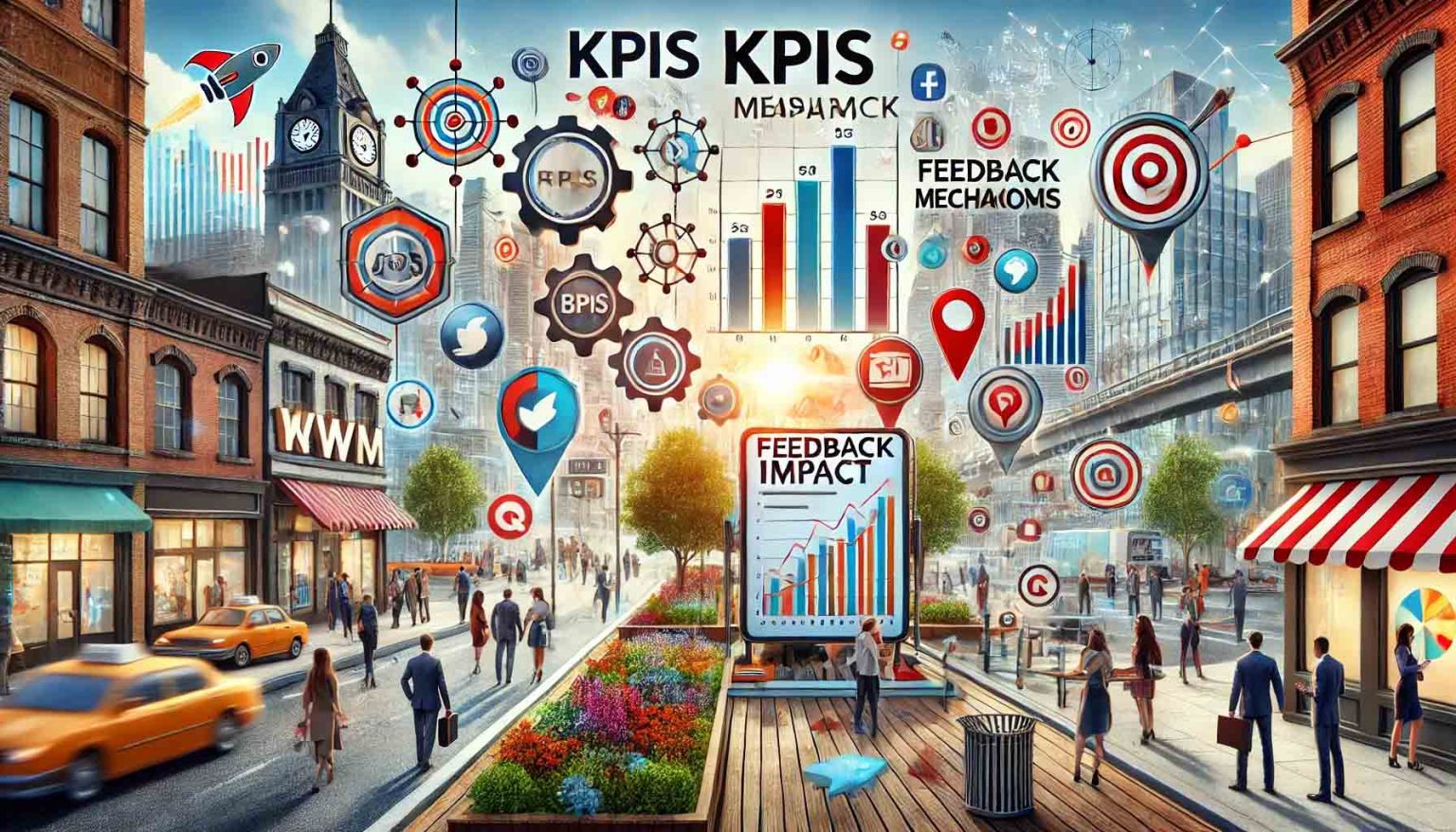
Measuring Impact
Key Performance Indicators (KPIs)
To determine the success of a guerrilla marketing campaign, it’s essential to track specific Key Performance Indicators (KPIs). These metrics provide valuable insights into how well the campaign is performing and its overall impact on the brand. Here are some crucial KPIs to consider:
Engagement: Measures how actively consumers interact with the campaign. This can include likes, shares, comments, and participation rates. For instance, the ALS Ice Bucket Challenge saw millions of people participating and sharing videos, generating massive engagement.
Brand Awareness: Gauges the extent to which the campaign has increased public awareness of the brand. This can be assessed through surveys, social media mentions, and search engine analytics. After Nike’s “Write the Future” campaign, brand recall and preference for Nike products surged significantly.
Reach: Indicates the number of people exposed to the campaign. High reach is often achieved through viral content, public installations, or media coverage. IBM’s “Smarter Cities” campaign, for example, reached millions through its clever use of urban spaces and online amplification.
Conversion Rates: Tracks how many people took a desired action, such as signing up for a newsletter, making a purchase, or attending an event. Coca-Cola’s “Happiness Machine” led to increased product sales and positive brand sentiment.
Return on Investment (ROI): Compares the campaign’s cost to the financial gains it generates. This metric helps determine if the campaign was cost-effective and profitable. Red Bull’s “Stratos” project, although expensive, generated unparalleled media coverage and brand engagement, proving its ROI.
Feedback and Adaptation
Using consumer feedback is vital for refining future guerrilla marketing tactics. Here’s how brands can effectively use feedback:
Surveys and Polls: Collect direct feedback from participants and the broader audience to understand their perceptions and reactions. This data can highlight what worked well and what didn’t.
Social Media Monitoring: Analyze social media conversations to gauge public sentiment and identify areas for improvement. Tools like Hootsuite and Brandwatch can help track mentions and sentiment analysis.
Focus Groups: Conduct focus groups to gain deeper insights into consumer experiences and expectations. These discussions can reveal subtle nuances that quantitative data might miss.
A/B Testing: Implement A/B testing for different elements of the campaign to determine which versions perform better. This approach can be particularly useful for refining visuals, messaging, and engagement tactics.
Iterative Campaigns: Use the feedback to iterate and improve. For example, if a certain aspect of the campaign was particularly successful, incorporate similar elements in future campaigns while addressing any identified shortcomings.
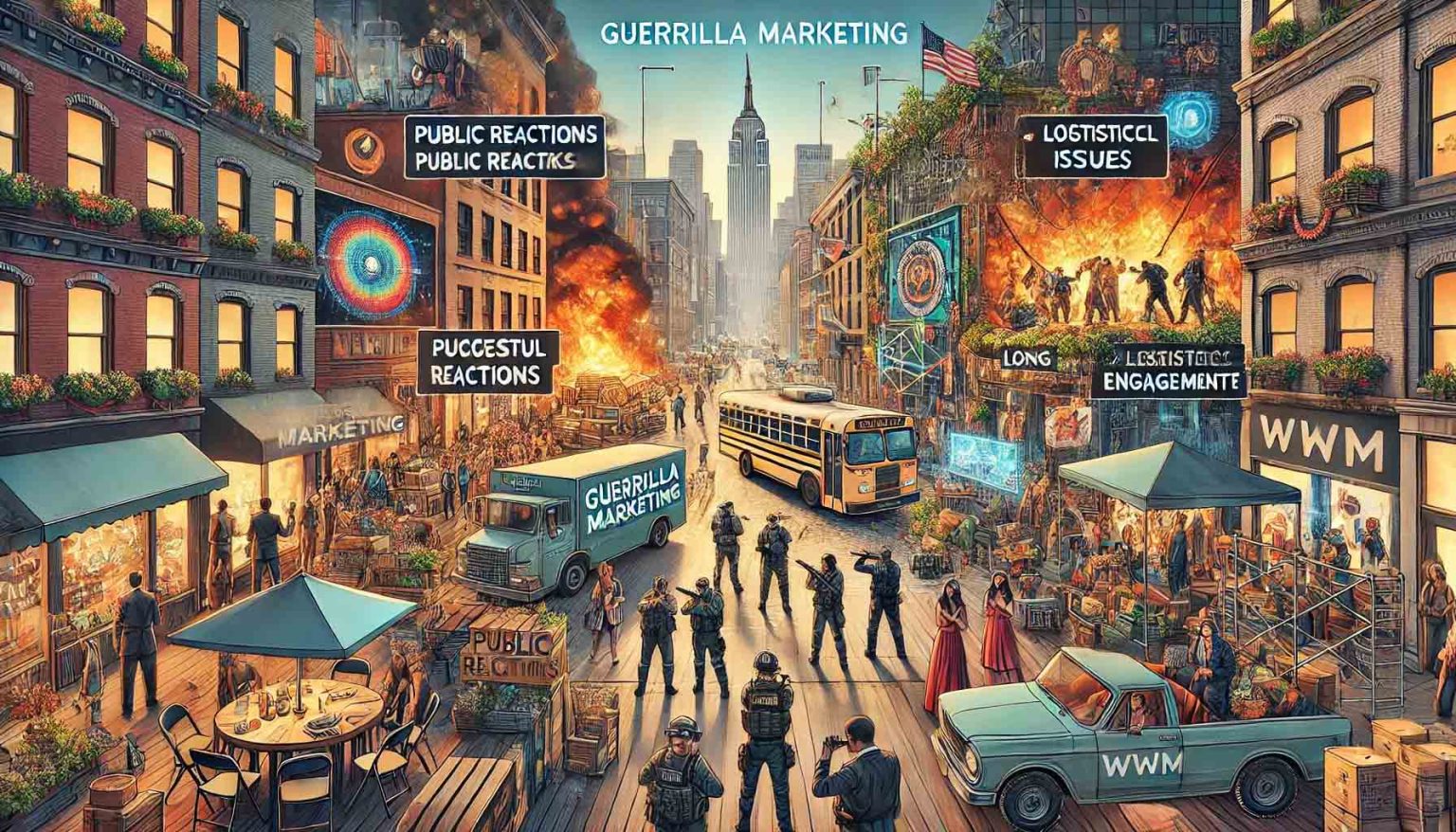
Challenges and Risks
Public Reaction
Managing potential negative feedback or controversy is a critical aspect of guerrilla marketing. While these campaigns aim to surprise and delight, they can sometimes backfire. An example is Snapple’s attempt to erect the world’s largest popsicle in New York City, which melted and flooded the streets. Such incidents can lead to negative publicity and damage the brand’s reputation. To mitigate this, companies should conduct thorough risk assessments and be prepared with crisis management plans. Monitoring social media and public sentiment allows for quick responses to any negative feedback.
Logistical Issues
Handling the practicalities of executing unconventional campaigns presents another set of challenges. Guerrilla marketing often involves intricate setups in public spaces, requiring permissions, coordination, and contingency planning. For instance, organizing a flash mob involves coordinating large groups of people, securing locations, and ensuring public safety. The logistics must be meticulously planned to avoid disruptions and ensure the campaign runs smoothly. Collaboration with local authorities and stakeholders can facilitate smoother execution and compliance with regulations.
Sustainability
Ensuring long-term benefits and avoiding one-hit wonders is essential for sustained brand growth. While guerrilla marketing campaigns can generate immediate buzz, it’s crucial to integrate them into a broader marketing strategy. This involves creating follow-up content, engaging with the audience post-campaign, and leveraging the initial excitement to build ongoing brand engagement. For example, blending online and offline elements can help maintain momentum. The “Share a Coke” campaign by Coca-Cola, which personalized bottles with names, continued its success by encouraging social media sharing and user-generated content, sustaining engagement over time.
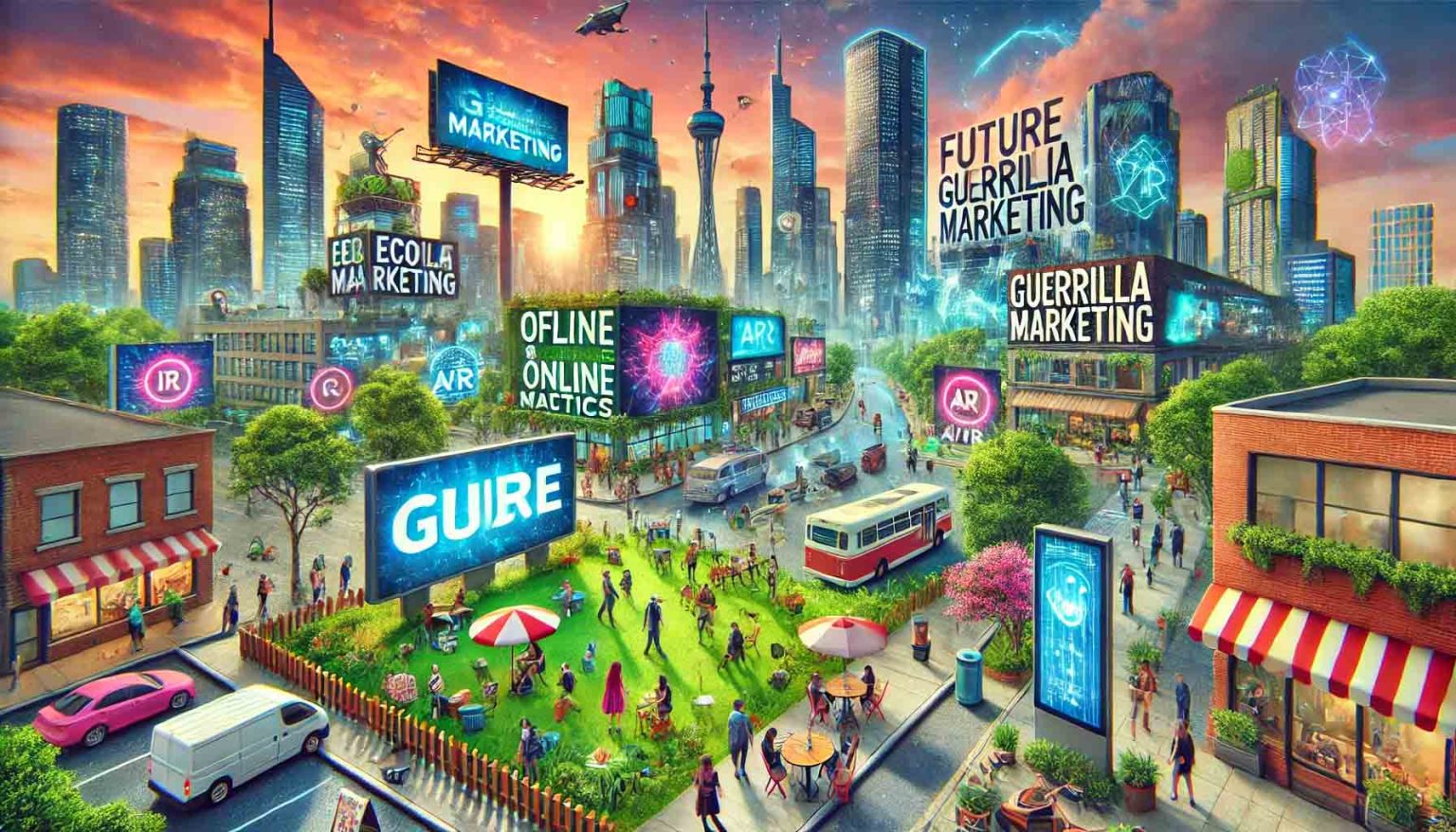
Future Trends in Guerrilla Marketing
Integration with Digital
Combining offline guerrilla tactics with online campaigns is becoming increasingly essential in the digital age. This hybrid approach leverages the strengths of both worlds to create more impactful and far-reaching campaigns. For instance, a street art installation can be paired with a social media hashtag campaign, encouraging people to take photos and share them online. This not only amplifies the reach of the offline activity but also drives online engagement. An example is the “Fearless Girl” statue in New York City, which went viral on social media and sparked global conversations about gender diversity and empowerment.
Sustainability and Ethics
Embracing responsible and ethical marketing practices is crucial as consumers become more environmentally and socially conscious. Brands are now focusing on sustainable materials and practices in their guerrilla marketing efforts. This includes using eco-friendly materials for installations and creating campaigns that promote social good. For example, Adidas launched a campaign creating biodegradable sneakers, highlighting their commitment to sustainability. Ethical marketing also involves transparency and honesty, ensuring that campaigns do not deceive or manipulate audiences but instead build trust and loyalty.
Technological Advancements
Leveraging new technologies like augmented reality (AR) and virtual reality (VR) is revolutionizing guerrilla marketing, offering immersive and interactive experiences that captivate audiences. AR can transform a simple poster into a dynamic digital experience when viewed through a smartphone, while VR can transport users to entirely new environments, creating memorable brand interactions. For example, IKEA’s AR app allows customers to visualize how furniture would look in their homes, blending digital and physical worlds seamlessly. These technologies not only enhance engagement but also provide valuable data on consumer behavior and preferences.
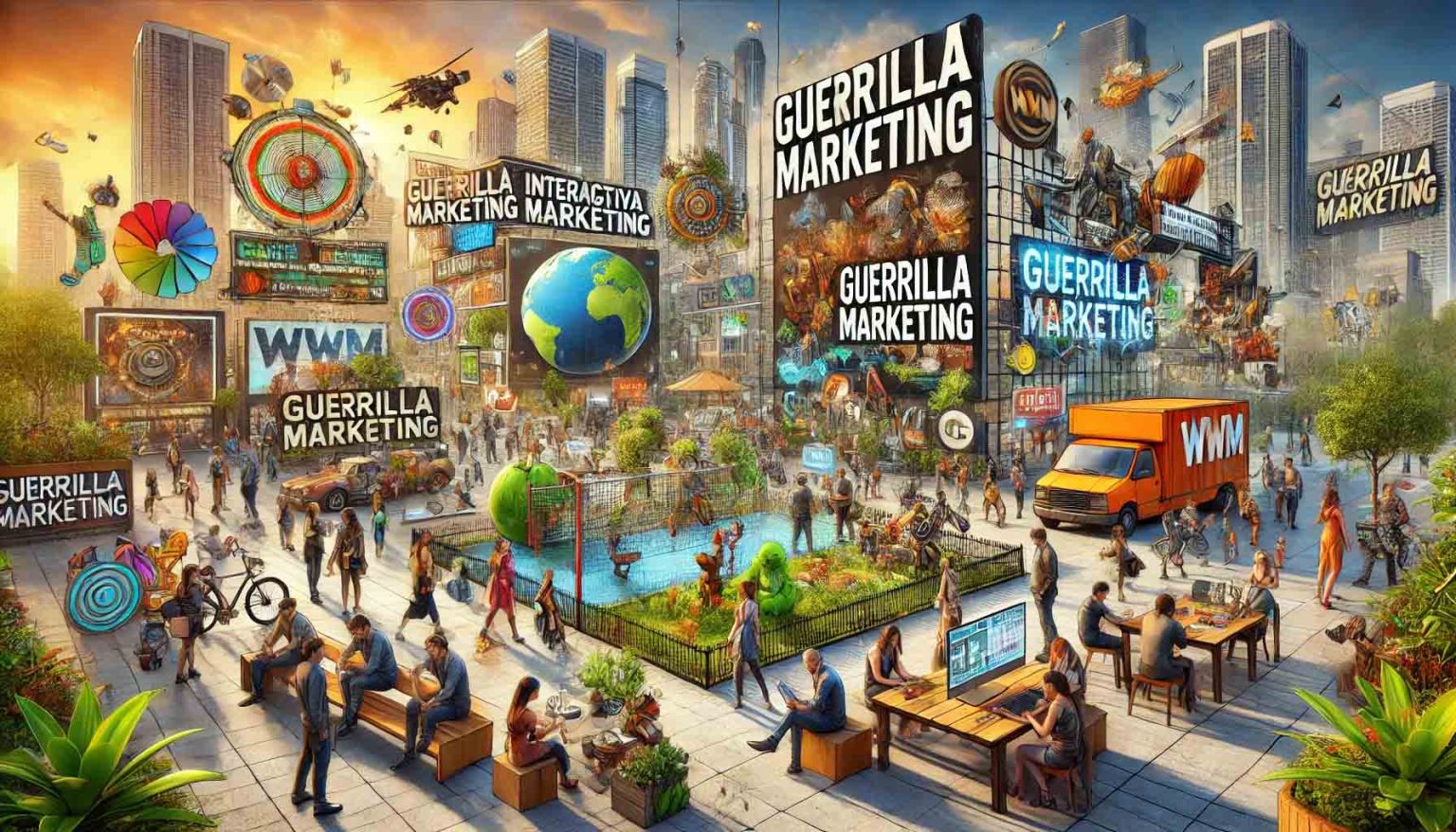
Conclusion
Summary of Key Points
Throughout this exploration of guerrilla marketing tactics, we’ve delved into the unique and powerful impact of creative and unconventional strategies. We began by defining guerrilla marketing and its core principles of surprise, originality, and cost-effectiveness. Historical context illustrated the evolution of these tactics, from early examples like the “Marlboro Man” to modern, tech-integrated campaigns. We examined key characteristics such as creativity, high impact with low costs, and consumer engagement. Various types of guerrilla marketing, including ambient, experiential, viral, and street marketing, were analyzed through case studies of successful campaigns by brands like Nike, Coca-Cola, and IKEA. Strategies for success emphasized understanding the target audience, strategic location and timing, creating shareable moments, and ensuring legal compliance. We also addressed the challenges and risks, including public reaction, logistical issues, and sustainability, as well as future trends like digital integration, ethical practices, and technological advancements.
Guerrilla marketing presents a unique opportunity for brands to stand out in a crowded marketplace. It encourages marketers to think creatively and take bold, innovative approaches to engage their audience. If you’re looking to make a significant impact with minimal resources, consider incorporating guerrilla marketing tactics into your strategy. Start by understanding your audience deeply, plan for strategic locations and timing, and create memorable, shareable experiences. Embrace technology and sustainability, and always be prepared to adapt based on feedback. With careful planning and creativity, guerrilla marketing can transform the way you connect with consumers and amplify your brand’s presence.
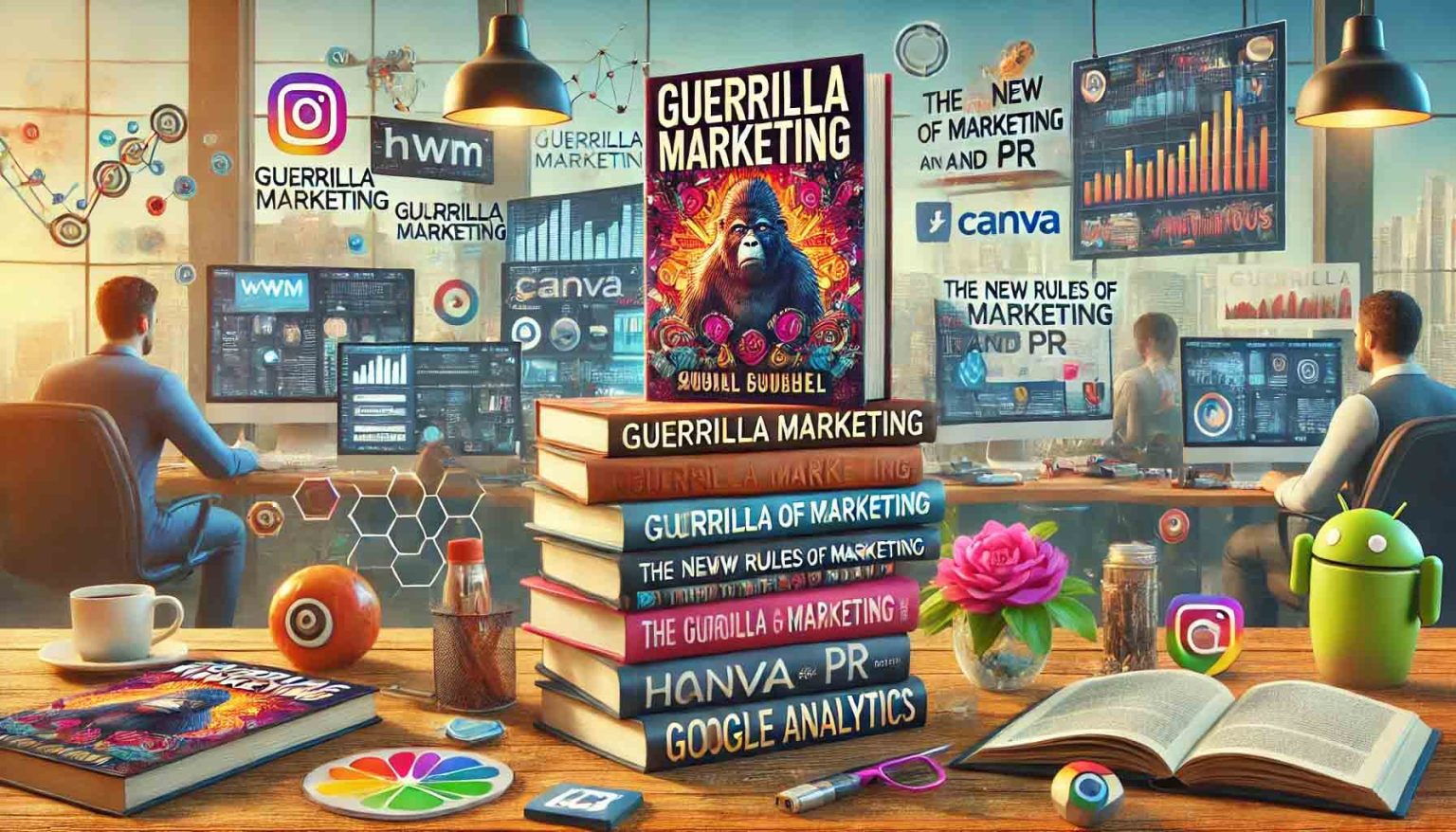
Additional Resources
Books and Articles
To delve deeper into the world of guerrilla marketing, here are some essential readings:
- “Guerrilla Marketing” by Jay Conrad Levinson
- The foundational text that introduced guerrilla marketing principles, focusing on creative and low-cost strategies.
- “The New Rules of Marketing and PR” by David Meerman Scott
- This book explores modern marketing tactics, including guerrilla strategies, in the digital age.
- “Made to Stick: Why Some Ideas Survive and Others Die” by Chip Heath and Dan Heath
- A great resource for understanding why certain marketing ideas resonate and how to craft memorable campaigns.
- “Contagious: How to Build Word of Mouth in the Digital Age” by Jonah Berger
- Explores the science behind viral marketing and how to make content that gets shared.
- “Blue Ocean Strategy” by W. Chan Kim and Renée Mauborgne
- Discusses innovative ways to create uncontested market space and make competition irrelevant.
Tools and Platforms
To effectively plan and execute guerrilla marketing tactics, consider using these tools and platforms:
- Hootsuite
- A social media management platform that helps schedule and analyze posts, crucial for tracking engagement and reach.
- Canva
- A graphic design tool perfect for creating visually appealing marketing materials.
- BuzzSumo
- Helps identify trending content and influencers, useful for crafting campaigns that resonate with your audience.
- Google Analytics
- Provides insights into your campaign’s performance, tracking key metrics like traffic and conversion rates.
- SurveyMonkey
- A tool for gathering feedback from your audience, helping refine future marketing strategies.

